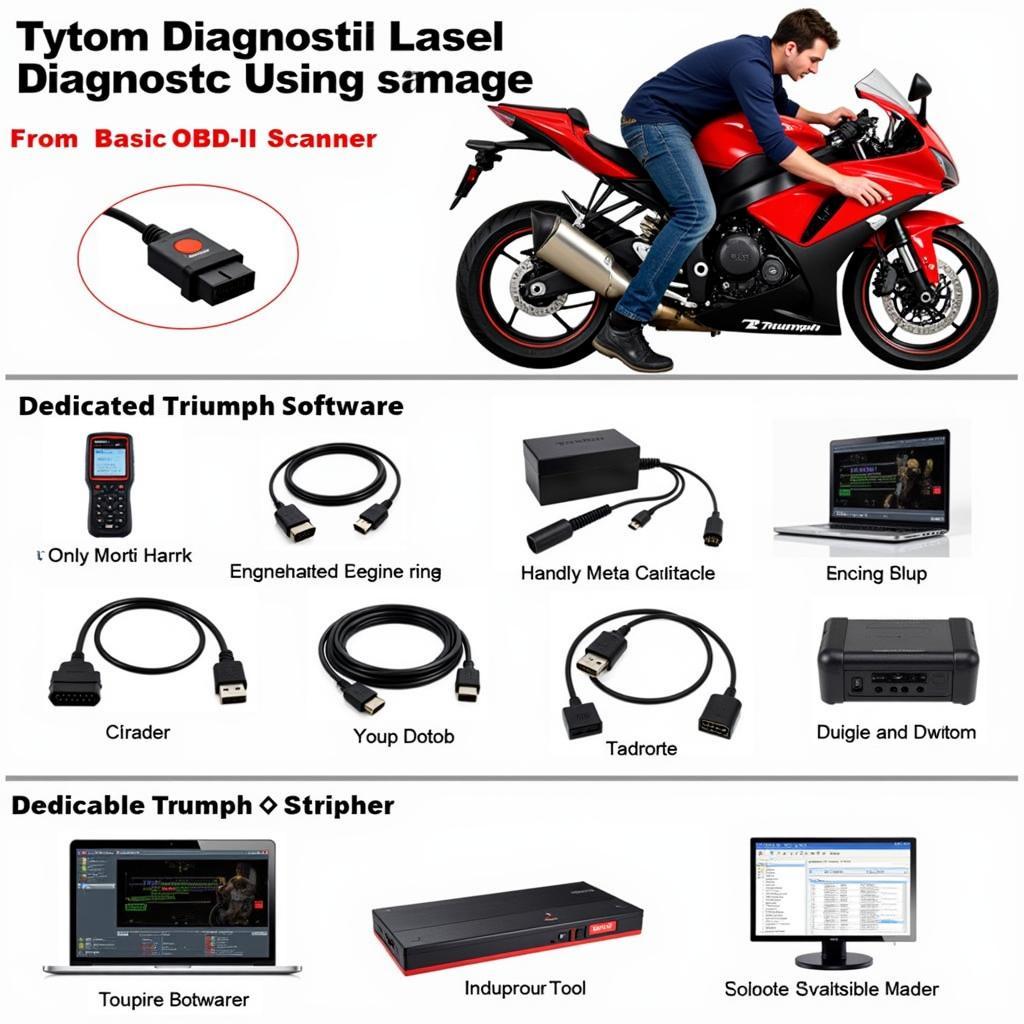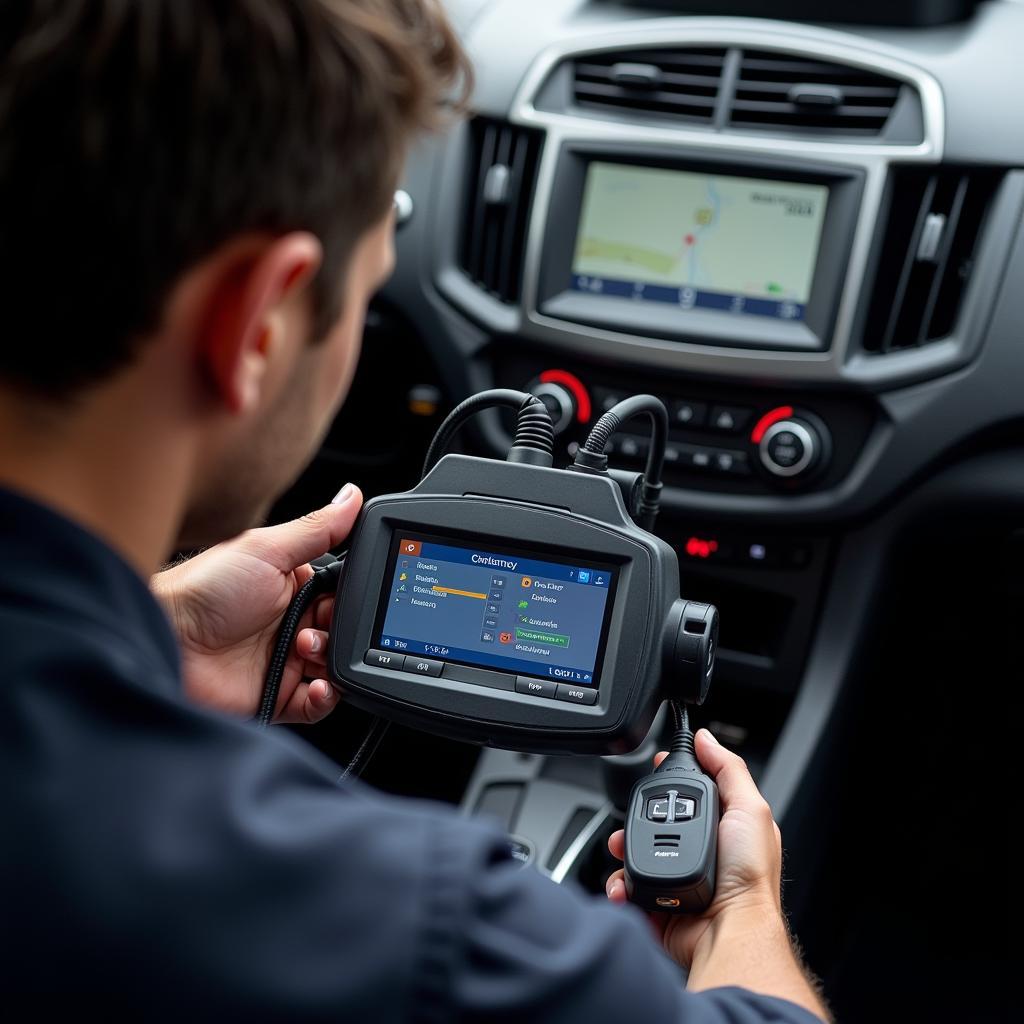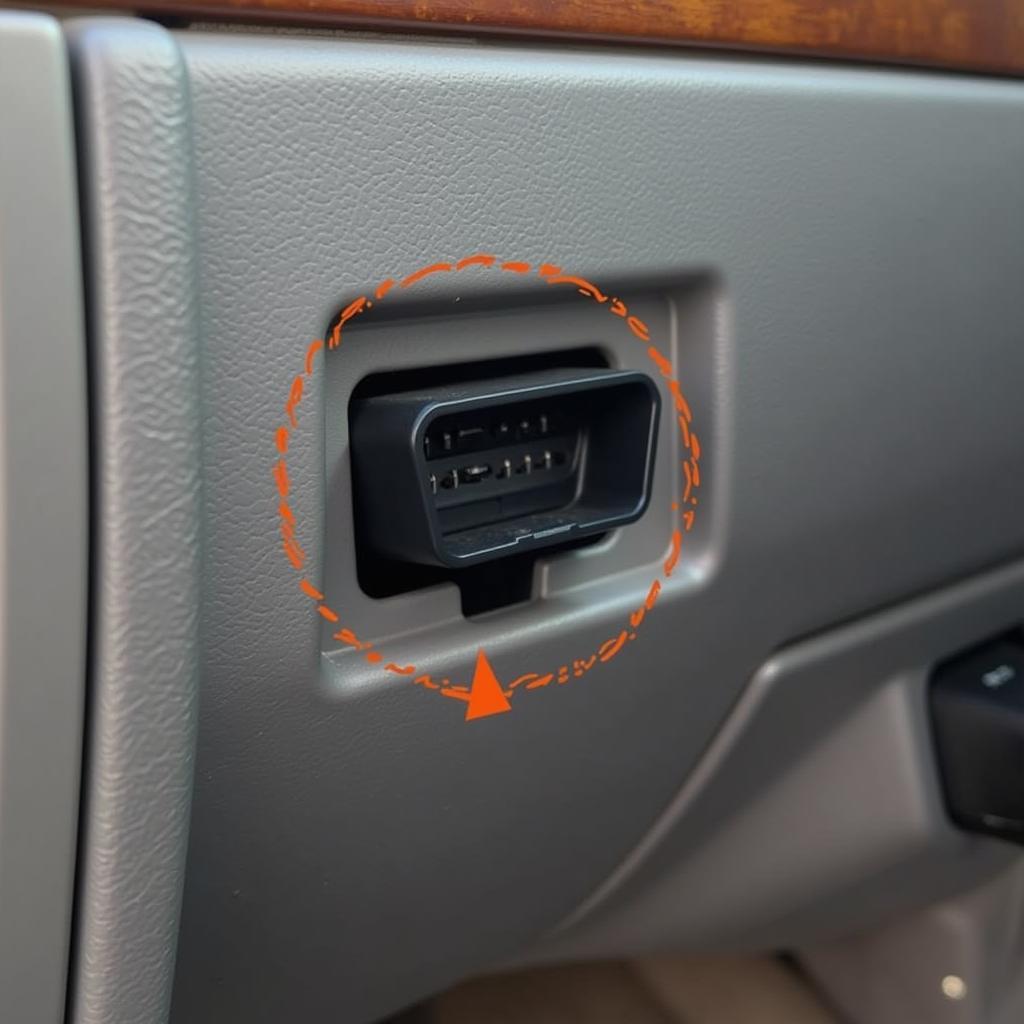A Triumph Daytona Diagnostic Tool is essential for any owner or mechanic working on these iconic motorcycles. Whether you’re troubleshooting a persistent issue or performing routine maintenance, the right diagnostic tool can save you time, money, and frustration. This article delves into the world of Triumph Daytona diagnostics, exploring the options available and guiding you on how to effectively utilize these tools for optimal motorcycle performance.
Understanding the Importance of a Triumph Daytona Diagnostic Tool
A diagnostic tool acts as a window into your Daytona’s electronic control unit (ECU), the brain of your motorcycle. It allows you to retrieve diagnostic trouble codes (DTCs), which are essentially error messages that pinpoint specific problems within the various systems. Imagine trying to find a needle in a haystack; that’s what troubleshooting a modern motorcycle can be like without a diagnostic tool. These tools are no longer just for professional mechanics; they’re becoming increasingly accessible and user-friendly for everyday riders.
Choosing the Right Triumph Daytona Diagnostic Tool
Choosing the right diagnostic tool can be overwhelming, with so many options available on the market. Consider your needs and technical expertise. Are you a seasoned mechanic or a DIY enthusiast? Do you need basic code reading capabilities or more advanced functions like live data streaming and component activation? Some popular options include dedicated Triumph diagnostic software and hardware, as well as more generic OBD-II scanners that offer varying levels of compatibility with Triumph motorcycles.
 Triumph Daytona Diagnostic Tool Options
Triumph Daytona Diagnostic Tool Options
Using a Triumph Daytona Diagnostic Tool: A Step-by-Step Guide
Once you’ve chosen your tool, using it effectively is crucial. Here’s a simple guide to get you started:
- Connect the tool: Locate the diagnostic port on your Daytona, typically found under the seat. Connect the diagnostic tool using the appropriate cable.
- Turn on the ignition: Turn the key to the “on” position, but do not start the engine. This powers up the ECU and allows the tool to communicate with it.
- Read the codes: Select the “read codes” function on your diagnostic tool. The tool will then scan the ECU for any stored DTCs.
- Interpret the codes: Each DTC corresponds to a specific fault. Consult your Triumph service manual or an online database to understand the meaning of each code.
- Clear the codes: Once you’ve addressed the underlying issue, use the tool to clear the codes from the ECU’s memory.
Advanced Diagnostic Techniques
Beyond basic code reading and clearing, some diagnostic tools offer more advanced features:
- Live Data Streaming: This allows you to monitor various sensor readings in real-time, giving you valuable insights into the motorcycle’s performance.
- Component Activation: This feature allows you to test individual components, like fuel injectors or relays, to pinpoint the source of a problem.
- Adaptation and Resetting: Some tools allow you to perform adaptations and resets, such as resetting the throttle position sensor or adjusting idle speed.
What if I Can’t Find the Problem?
Even with a diagnostic tool, some issues can be difficult to diagnose. In these cases, it’s best to consult a qualified Triumph technician. They have the experience and specialized equipment needed to tackle even the most challenging problems.
 Triumph Daytona Expert Diagnosis
Triumph Daytona Expert Diagnosis
“A diagnostic tool is like having a conversation with your motorcycle,” says John Smith, a veteran motorcycle mechanic with over 20 years of experience. “It tells you exactly what’s going on, allowing you to address issues quickly and efficiently.”
Triumph Daytona Diagnostic Tool: FAQs
- What is the best diagnostic tool for a Triumph Daytona? The best tool depends on your needs and budget. Consider factors like functionality, ease of use, and compatibility.
- Can I use a generic OBD-II scanner on my Triumph Daytona? Some generic scanners offer limited Triumph compatibility. It’s best to choose a tool specifically designed for Triumph motorcycles.
- Where can I find the diagnostic port on my Triumph Daytona? The diagnostic port is typically located under the seat.
- How do I interpret diagnostic trouble codes? Consult your Triumph service manual or an online database.
- Can I damage my motorcycle by using a diagnostic tool? If used correctly, a diagnostic tool poses no risk to your motorcycle.
- What should I do if I can’t fix the problem using a diagnostic tool? Consult a qualified Triumph technician.
- How often should I use a diagnostic tool? Periodically scanning for codes can help identify potential issues before they become major problems.
“Regular use of a triumph daytona diagnostic tool allows for preventative maintenance, often avoiding costly repairs down the road,” adds Sarah Miller, lead technician at a renowned motorcycle repair shop.
Conclusion
A triumph daytona diagnostic tool is an invaluable asset for any Daytona owner or mechanic. It empowers you to take control of your motorcycle’s maintenance and repair, saving you time and money in the long run. From basic code reading to advanced diagnostics, these tools offer a range of functionalities to suit all needs and skill levels. If you’re looking for expert advice or need assistance with your Triumph Daytona, don’t hesitate to contact us at ScanToolUS. You can reach us at +1 (641) 206-8880 or visit our office at 1615 S Laramie Ave, Cicero, IL 60804, USA. We’re always happy to help keep your Daytona running smoothly.



